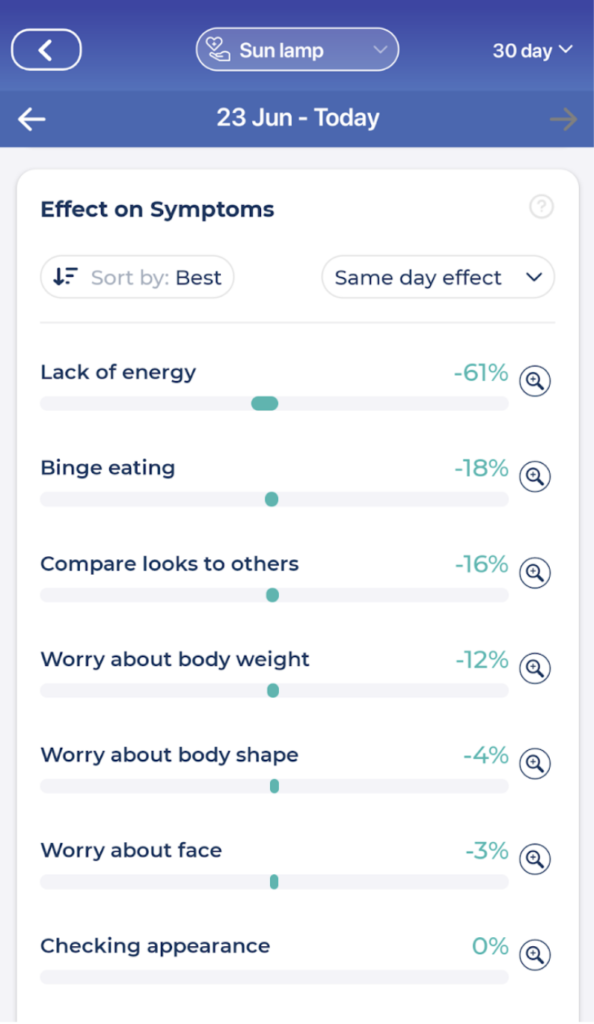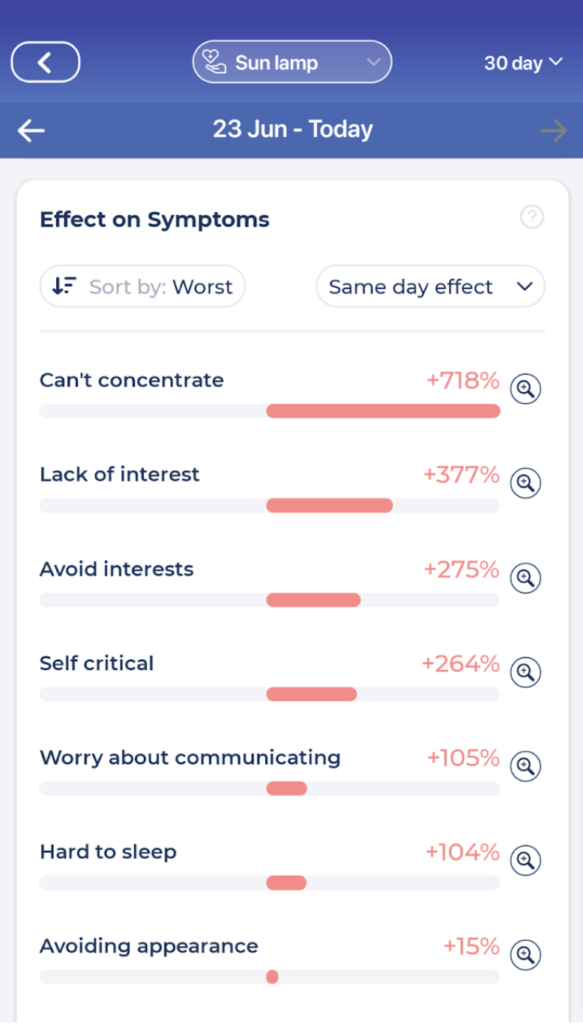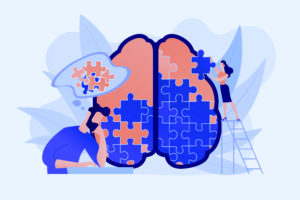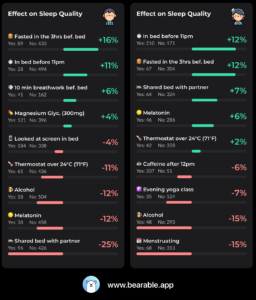You’re probably wondering why I decided to write about Seasonal Affective Disorder (SAD) in the middle of Summer.
Well, as of June 25th, I decided to temporarily leave behind my home at the southern tip of the UK to take advantage of a house-sitting gig in Edinburgh. That’s right, I gave up living by the beach all summer to spend time living in a basement apartment in Scotland. So whilst everyone else is enjoying extra sunlight and warm weather around the UK, I’m getting less light and heat than I’m used to.
via GIPHY
All of this aside, I’m a person that lives with symptoms of anxiety and depression which are also affected by seasonal change. As many people with depression will be familiar with; I’ll literally try anything that might encourage my brain to increase the production of serotonin.




What is Seasonal Affective Disorder (SAD) and how is a lamp meant to help?
It turns out that SAD is an outdated term for major depressive disorder with seasonal patterns (MDD). These seasonal patterns aren’t limited to Wintertime either. The main factor leading to the symptoms of SAD is the amount of light a person is exposed to. Specifically, the way that the chemicals in the brain that help to regulate a person’s body clock (or circadian rhythm) are impacted by changes in exposure to natural light. Thinking of SAD in terms of circadian rhythm might be helpful. For example, a person moving from Iceland to the Mediterranean might be just as affected by the increase in exposure to sunlight as someone moving in the opposite direction. Simply because they would both experience disruptions in the way their brain typically creates the chemicals that regulate their natural rhythm. Symptoms of Wintertime SAD can include:-
- daytime fatigue
- difficulty concentrating
- feelings of hopelessness
- increased irritability
- lack of interest in social activities
- lethargy
- reduced sexual interest
- unhappiness
- weight gain
-
- agitation
- difficulty sleeping
- increased restlessness
- lack of appetite
- weight loss

How is a SAD lamp meant to help Mood & Depression?
“Some people with SAD find that light therapy can help improve their mood considerably. This involves sitting by a special lamp called a lightbox, usually for around 30 minutes to an hour each morning. The light produced by the lightbox simulates the sunlight that’s missing during the darker winter months. It’s thought the light may improve SAD by encouraging your brain to reduce the production of melatonin (a hormone that makes you sleepy) and increase the production of serotonin (a hormone that affects your mood).” – NHS Website Ultimately, I wanted to track the impact of using a SAD lamp on my mood and symptoms of depression to see if I was able to balance out the potential impact of changes to my exposure to natural light.
Using a SAD Lamp for a week(ish)
It’s recommended that you consult a doctor before using a SAD lamp as well as limiting your exposure to just 30 minutes each morning. I also tried to get more natural light by walking for 30 mins each morning. Usually, I would write a day-by-day account of my experience and how I felt it impacted my health. However, as this was essentially a passive activity – sitting in front of a lamp whilst I check emails – I feel like it’s not that useful. Instead, I’ve written a list of my main observations:-
- Sitting in front of the lamp felt like it was helping my mood, even on day one. This may have been a placebo effect but either way, I felt better for using it.
- After getting distracted and sitting in front of the SAD lamp for longer than the recommended time. Like, much longer. I noticed my concentration dipping in the afternoons.
- The SAD lamp kind of acts like a ring-lamp for video calls which inadvertently helped me to feel less self-conscious during team meetings.
- After a week, I noticed my sleep pattern fluctuating more than normal. I needed to get up later and felt my sleep quality was possibly being impacted. This could have been the result of overexposure to the lightbox.
- Because I was so sure that the SAD Lamp was having a positive effect on my mood and energy I ended up using it for 12 days without checking the results rather than the usual seven days.
What did Bearable tell me about the SAD lamps impact on my health?
Avg. Mood improved by 0%* Avg. Energy improved by 0%* Avg. Symptom Score worsened by 13% Avg. Sleep Quality worsened by 8% Avg. Sleep Quantity worsened by 8% *Despite there being no significant change in mood and energy the average score for both became more consistent. For example, instead of mood scores varying between 6 and 8 on alternate days, I was more likely to be a consistent 7. How did the SAD Lamp positively affect my symptoms? Lack of energy improved by 61% Binge eating improved by 18% Comparing looks to others improved by 16% Worrying about bodyweight improved by 12% Worrying about body shape improved by 4% Worrying about my face improved by 3% How did the SAD Lamp negatively affect my symptoms? Concentration worsened by 718% Lack of interest worsened by 377% Avoiding interests worsened by 275% Self-criticism worsened by 264% Worrying about communicating worsened by 105% Ability to sleep worsened by 104% Avoiding my appearance worsened by 15% Waking during the night worsened by 14% Worrying about my appearance worsened by 7% Other factors that may have contributed to these results include:-
- Increasing my intake of processed foods
- Switching to a less strict fasting routine
- Changing the supplements that I take

What did I learn about my health by using a SAD Lamp?
Overall, I feel like it had some positive effects. Especially on the consistency of my mood and energy levels. It also made me feel like I had more energy – which is possibly a placebo effect – but still a positive outcome. Some of the symptoms of my Body Dysmorphia such as worrying about my body weight and shape improved too. I think the negative effects on my symptoms can also be attributed to over-exposing myself to the SAD Lamp. I definitely had more than 30mins exposure almost every day. Mostly because I’d get wrapped up in work and forget to turn it off. My loss of concentration on days that I used the lamp is also concerning and way more extreme than I realised during the experiment. It possibly correlates with increased restlessness which is a side-effect of using the lamp for too long. Being more self-critical and avoiding my interests more than usual were the other negative changes in my symptoms. These might also go hand-in-hand with having less concentration. Often my mind will race from one thought to another and the loss of focus can lead to me wasting time scrolling through social media or having negative thoughts about myself. The main lesson I learned from using the SAD lamp is not to abuse its power. It clearly improves the consistency of my moods but overuse can also lead to some pretty significant side effects.



















